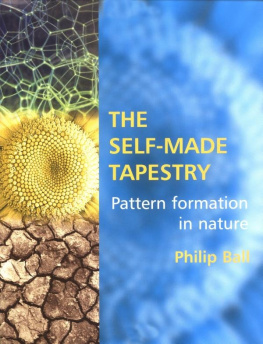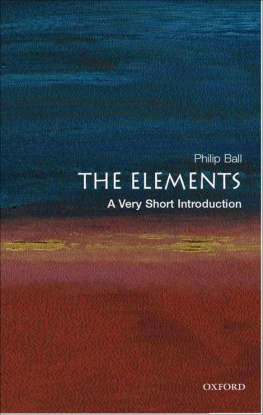Philip Ball - The Self-Made Tapestry: Pattern Formation in Nature
Here you can read online Philip Ball - The Self-Made Tapestry: Pattern Formation in Nature full text of the book (entire story) in english for free. Download pdf and epub, get meaning, cover and reviews about this ebook. City: USA, year: 2001, publisher: Oxford University Press, genre: Science. Description of the work, (preface) as well as reviews are available. Best literature library LitArk.com created for fans of good reading and offers a wide selection of genres:
Romance novel
Science fiction
Adventure
Detective
Science
History
Home and family
Prose
Art
Politics
Computer
Non-fiction
Religion
Business
Children
Humor
Choose a favorite category and find really read worthwhile books. Enjoy immersion in the world of imagination, feel the emotions of the characters or learn something new for yourself, make an fascinating discovery.
- Book:The Self-Made Tapestry: Pattern Formation in Nature
- Author:
- Publisher:Oxford University Press
- Genre:
- Year:2001
- City:USA
- Rating:4 / 5
- Favourites:Add to favourites
- Your mark:
- 80
- 1
- 2
- 3
- 4
- 5
The Self-Made Tapestry: Pattern Formation in Nature: summary, description and annotation
We offer to read an annotation, description, summary or preface (depends on what the author of the book "The Self-Made Tapestry: Pattern Formation in Nature" wrote himself). If you haven't found the necessary information about the book — write in the comments, we will try to find it.
The Self-Made Tapestry: Pattern Formation in Nature — read online for free the complete book (whole text) full work
Below is the text of the book, divided by pages. System saving the place of the last page read, allows you to conveniently read the book "The Self-Made Tapestry: Pattern Formation in Nature" online for free, without having to search again every time where you left off. Put a bookmark, and you can go to the page where you finished reading at any time.
Font size:
Interval:
Bookmark:
 |
| The waves of the sea, the little ripples on the shore, the sweeping curve of the sandy bay between the headlands, the outline of the hills, the shape of the clouds, all these are so many riddles of form, so many problems of morphology, and all of them the physicist can more or less easily read and adequately solve. D'Arcy Wentworth Thompson On Growth and Form |
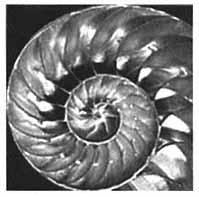 |
| There was always something a little different about meteorite ALH84001, found in 1984 on the icy Allan Hills of Antarctica. For one thing, it came from Marslike only 11 other meteorites found around the world. But unlike these others, ALH84001 was oldand I mean four-and-a-half billion years old. The rock was formed when the Red Planet was newly born. But the most extraordinary aspect of this little lump of Mars did not emerge until August 1996, when scientists from NASA announced that it might contain signs of fossil life from our cosmic neighbour. |
| Maybe my years at Nature magazine have exposed me to too many amazing 'discoveries' that vanish like morning mist under close scrutiny; but I felt in my bones that this claim would not stand the test of time. If I'm wrong (and I rather hope I am), this is one of the most significant discoveries of the twentieth century. But although the jury is still out while scientists clamour for more pieces of the meteorite to carry out exacting tests, already there are signs that this evidence for ancient life on Mars is on shaky ground. |
| One of the lines of argument particularly caught my attention. Within the Martian rock the NASA team found microscopic wormlike features about a tenth of a micrometre in width, which they suggested might be the fossilized remains of bacteria (Fig. 1.1). What leapt to my mind was a book called Earth's Earliest Biosphere, in which Californian geologist William Schopf lists and depicts countless examples of curious, bacteria-like structures in ancient rocks from Earth's early history. Schopf explains that, while some of these are indeed microfossils of primitive bacteria dating back to around a billion years after the Earth was formed, many others are not fossils at all, but most probably structures formed in the rocks by purely geological processes. |
| Prospectors for early life on Earth are in constant danger of being fooled by these mineral structures, which in some cases look barely distinguishable from well-established microfossils (Fig. 1.2). There is a recognized class of objects called 'dubiofossils', which are microscopic rock structures whose origin one cannot unambiguously ascribe either to organic or inorganic causes. I should say that the NASA scientists were familiar with these pitfalls, and were also uncomfortably aware that their putative Martian fossils were much smaller than any known from Earth. But they felt that the several other suggestive chemical characteristics of meteorite ALH84001 added weight to the idea that the worm-like structures were indeed the mineralized casts of primitive organisms from Mars. |
| You might think that it should be an easy matter to distinguish a fossilized remnant of a living organism from some rock feature formed by physical forces alone. Surely we can, at even a brief glance, tell a crystal from a living creature, an insect from a rock? |
| Yet what is it that encourages us to make these distinctions, based on superficial features alone? I suspect that most of us at some level identify a kind of characteristic form that we associate with living things; but it is hard to put that into words. Living organisms come in all shapes and sizesa tree, a rabbit, a spiderbut there is something purposeful about these forms. They are complex (and I shall shortly have to be a little more |
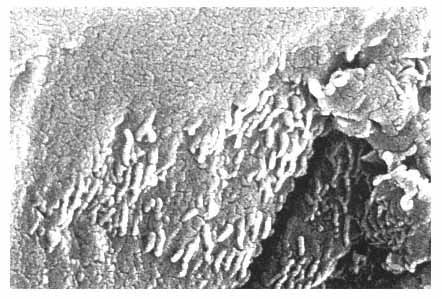 |
| Fig. 1.1 These microscopic structures found in a Martian meteorite have been presented as evidence for ancient bacterial life on Mars. Are they the fossilized remnants of tiny worm-like organisms? (Photo: NASA.) |
| precise in using this word), but not random. They have a kind of regularityevident, for instance, in the bilateral symmetry of our bodies or in the branching pattern of a treebut it is not the geometric regularity of crystals. Somehow it seems natural, when we see forms like those in Fig. 1.1, to associate them with the subtle and delicate forces of life, not with the coldly geometrical exigencies of physics. |
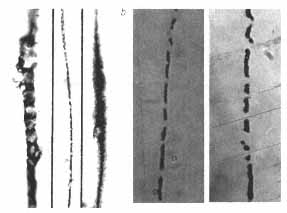 |
| Fig. 1.2 How do you tell a fossil from a rock? The formations shown here have all been identified in ancient rocks; but whereas those in (a) are probably genuine fossilized bacteria, several billions of years old, it is possible that those in (b) were formed by purely geological processes. (Photos: from W. Schopf (ed.) (1991). Earth's Earliest Biosphere. Reprinted with permission of Princeton University Press.) |
| If there is one thing I hope to do in this book, it is to shake up these assumptions. I wish to show in particular that pattern and organized complexity of form need not arise from something as complicated as life, but can be created by simple physical laws. This idea of complexity from simplicity has become almost a new scientific paradigm in recent years, and most probably a cliche too. Yet I hope here to tie it down, to show that it is not a recondite solution to all of life's mysteries, nor a result of a newly acquired facility for tricky computer-modelling, nor even a particularly new discoverybut a theme that has featured in scientific enquiry for centuries. Some of the complex patterns that I shall consider in this book pose questions that are truly ancient: from where come the stripes of a tiger, the procession of 'mare's tail' clouds, the undulations of sand dunes, the vortex of a whirlpool, the shapes and decorative adornments of sea shells? |
| Imposters |
| Let me delve further into our preconceptions about form and pattern. If you saw through the microscope mineral formations like those in Fig. 1.3a, would you suspect that these are the shells or skeletons of some tiny creatures? That would be an understandable assump- |
| tion, yet they are the products of a purely chemical process involving the precipitation of silica from a soluble salt. Much the same chemical brew can produce the surface patterns in Fig. 1.3b, strikingly reminiscent in both shape and scale of the putative Martian fossils in Fig. 1.1! What on earth sculpts these mineral bodies into such odd and apparently 'organic' forms? |
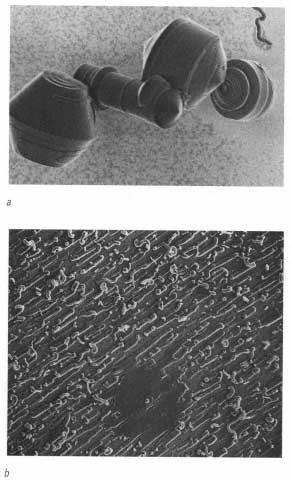 |
| Fig. 1.3 (a) Are these complex, patterned mineral structures the shells or skeletons of tiny organisms? On the contrary, they are the product of a purely synthetic chemical |
Font size:
Interval:
Bookmark:
Similar books «The Self-Made Tapestry: Pattern Formation in Nature»
Look at similar books to The Self-Made Tapestry: Pattern Formation in Nature. We have selected literature similar in name and meaning in the hope of providing readers with more options to find new, interesting, not yet read works.
Discussion, reviews of the book The Self-Made Tapestry: Pattern Formation in Nature and just readers' own opinions. Leave your comments, write what you think about the work, its meaning or the main characters. Specify what exactly you liked and what you didn't like, and why you think so.

